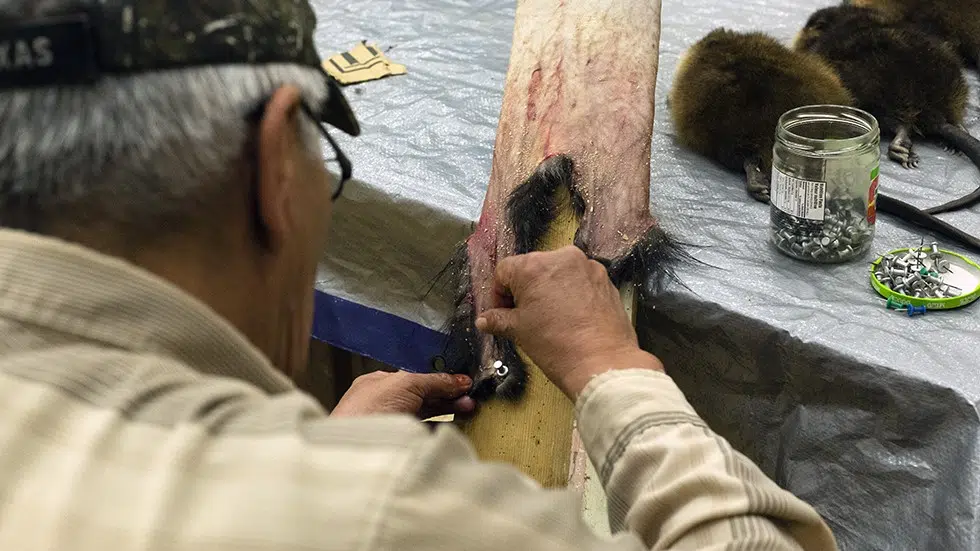
Traditional trapping and furs featured at the James Smith Cree Nation winter festival
The preservation of traditional knowledge and the old ways of life were on display in the James Smith Cree Nation during its annual winter festivities.
On Feb. 21 at the Bernard Constant Community School, youth had an opportunity to learn a bit more about ancestral traditions before modern advancements.
Garth Sanderson and his wife Jamie, along with Richard Moostoos were present to share their knowledge about trapping. The trio has many years of experience on the trap lines.
“We do this for exercise and for demonstration; we don’t make a lot of money on it,” Garth said. “Still, the kids gotta know where they come from, their heritage and that the old people long ago did this to stay alive.”


